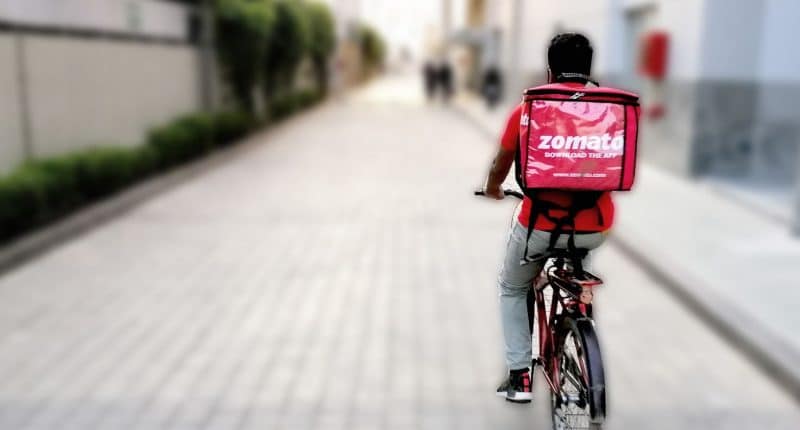Restaurant aggregator and food delivery major Zomato reported on Thursday that it had clocked a drop in the consolidated loss for the quarter ended September 30, 2022. Aided by a surge in online orders and deliveries, the unicorn narrowed its net loss for the quarter from ₹430 crores last year to ₹251 crores for the second quarter of the financial year 2022-23 (FY23).
Its total adjusted revenue for the same period clocked a growth of 48% year-on-year (YoY) to reach ₹21.07 billion, an increase from the ₹18.1 billion it pocketed in revenue in the previous quarter – Q1FY23. Its total adjusted EBITDA loss for the same period fell from ₹3.10 billion in Q2FY22 to ₹1.92 billion in the September quarter.
Even though Zomato’s stocks fell steeply this year and it started trading below its IPO price band – it is currently trading at ₹63.65 – the company’s food delivery vertical clocked a growth for the quarter. Making up the majority of the total adjusted revenue for the quarter, Zomato’s food delivery business generated ₹15.81 billion for the quarter – an increase from ₹14.70 billion in Q1 FY23 – while its gross order value (GOV) registered a quarterly growth of just over ₹2 billion to reach ₹66.31 billion for the September quarter. The contribution margin improved from 2.8% in Q1 FY23 to 4.5% in the recent quarter.
According to Zomato CFO Akshant Goyal, this growth and rise in the contribution margin of the food delivery business can be attributed to improvements on both cost and revenue, due to the result of scale and increased focus on profitability over the last few quarters. Its average monthly transacting users grew during the quarter as well – clocking a quarterly growth of 4.4% to reach 17.5 million for the September quarter, while its average monthly active food delivery partners clocked a steep growth of 22,000 to take the total amount to 341,000.
“While our food delivery business has been growing and steadily moving towards profitability, I believe there is room for the business to grow much faster than what it is currently trending at. I don’t know if I can attribute this to the macro environment — primarily because I know for a fact that we could have innovated and executed better in the last couple of months. The restaurant and food delivery industry in India is still nascent and we need to relentlessly execute to tap into the large opportunity,” Zomato CEO Deepinder Goyal informed in the letter to the shareholders.
Coming to its other verticals, we find that revenue from Hyperpure grew by 23% over the quarter – and 199% annually – to reach ₹3.34 billion, while its adjusted EBITDA clocked a loss of ₹53 million. The financials of quick commerce player Blinkit – which Zomato had acquired earlier this year – are included in the quarterly earnings as well. For the quarter, Blinkit’s revenue grew to ₹2.36 billion for the quarter, while it registered 26.1 million orders for the quarter. People spent more on their orders for the quarter, evidently, and the average order value for Q2 FY23 came to ₹568, while its GOV grew by 26% quarterly to reach ₹14.82 billion. Its average monthly transacting customers for the quarter rose by 0.4 million to reach 2.6 million as well.
The Tech Portal is published by Blue Box Media Private Limited. Our investors have no influence over our reporting. Read our full Ownership and Funding Disclosure →






